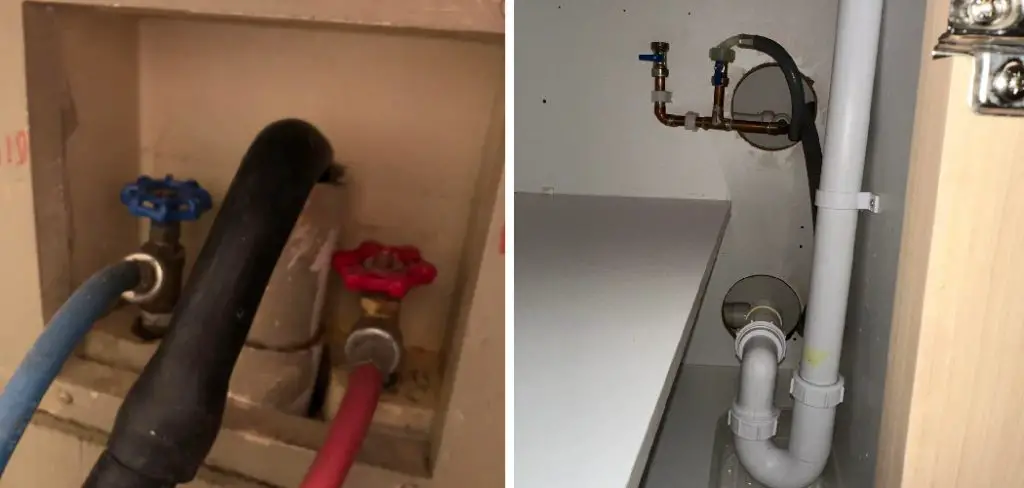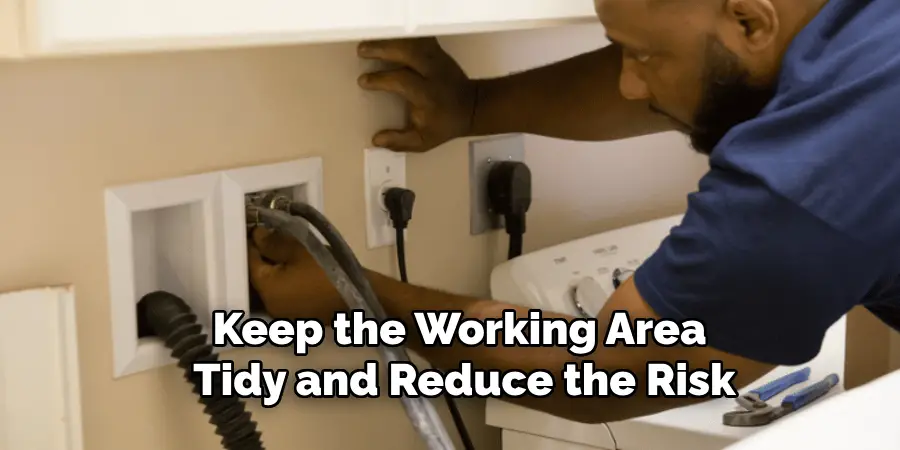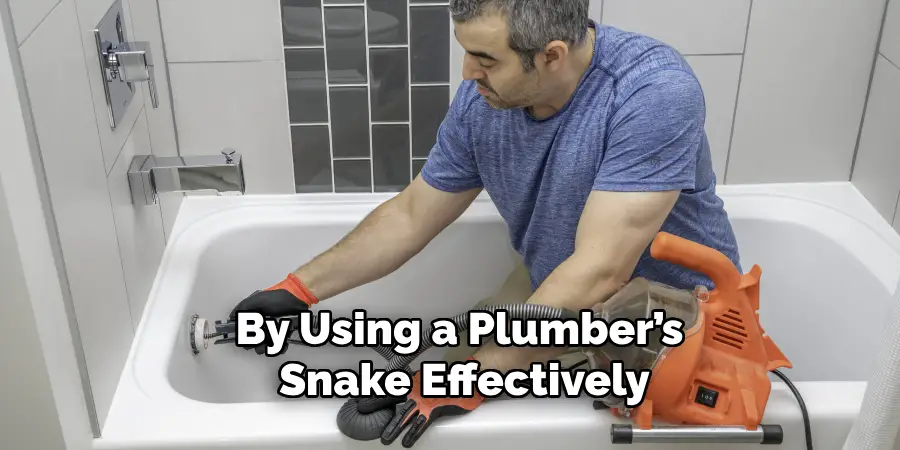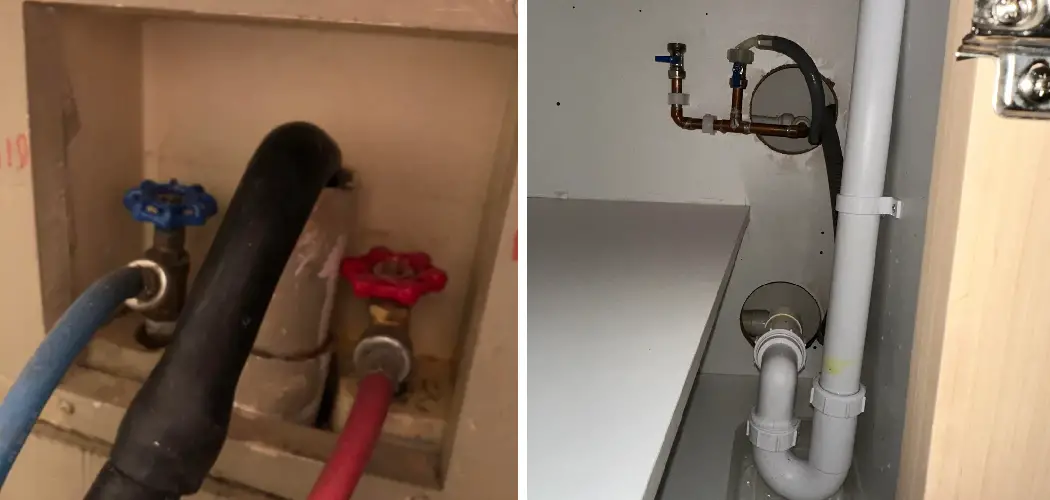A standpipe drain is a vertical pipe that connects directly to your home’s drainage system. It is commonly used for washing machines, effectively directing the wastewater away from the appliance. Keeping the standpipe drain clear is crucial, as blockages can lead to water backups and potentially cause flooding, resulting in significant damage and costly repairs.

When learning how to unclog standpipe drain, it involves a series of steps that include gathering the necessary tools, preparing the area, using appropriate methods like plunging and snaking, and applying maintenance tips to prevent future clogs. Knowing how to unclog the standpipe drain not only restores proper drainage but also ensures the longevity of your plumbing system and the safety of your home.
Gather the Necessary Tools and Materials
Before starting the process of unclogging a standpipe drain, gathering all the necessary tools and materials is essential to ensure the task proceeds smoothly. You will need a plunger to create suction and help dislodge the clog. A plumber’s snake, or drain auger, will be crucial for breaking up and removing stubborn blockages deeper within the pipe. Keep a bucket handy to catch any water or debris that may spill out during the process.
Towels or rags are also useful for containing messes and protecting the surrounding area. Rubber gloves are essential to protect your hands from dirty water and potential contaminants. Additionally, a pipe wrench can be useful if you need to disconnect any pipes, though it is optional. Finally, consider having a drain cleaner on hand, preferably an enzymatic or non-corrosive one, to break down any remaining residue and ensure a thorough cleaning.
Turn Off the Water Supply and Prepare the Area
Turn Off Appliances
- If the standpipe drain is connected to a washing machine, turn off the machine and unplug it.
Clear the Area
- Remove any items around the standpipe to ensure easy access.
- Place towels or rags around the base of the standpipe to catch any water spills.
Turn Off Appliances:
- If the standpipe drain is connected to a washing machine, turn off the machine and unplug it.
- Disconnect the washer’s drain hose from the standpipe to prevent any leakage or accidental water flow during the unclogging process.

Clear the Area:
- Remove any items around the standpipe to ensure easy access. This includes detergent bottles, laundry baskets, and any other obstacles that might be in the way.
- Place towels or rags around the base of the standpipe to catch any water spills. This will help prevent water damage to the floor and make clean-up easier.
- Position a bucket nearby to collect any water or debris that may come out of the standpipe during the unclogging process. This will keep the working area tidy and reduce the risk of slipping on wet surfaces.
How to Unclog Standpipe Drain: Plunge the Standpipe Drain
- Create a Seal:
- Ensure there is water in the standpipe to create a good seal with the plunger.
- Place the plunger over the standpipe’s opening. The water will help create a vacuum, enhancing the plunger’s effect.
- Plunge the Drain:
- Push the plunger down firmly and then pull up quickly. This motion should be strong and steady to generate enough suction to dislodge the clog.
- Repeat this motion several times, maintaining a consistent rhythm. The repeated plunging action helps to break up and move the blockage through the pipe.
- Check for Drainage:
- After a series of plunging motions, remove the plunger and observe if the water begins to drain from the standpipe.
- If the water drains slowly or remains stagnant, continue the plunging process. Persistence is key, as it may take several attempts to fully clear the clog.
- Once the water begins to drain freely, run additional water through the standpipe to ensure that the clog is completely removed and that the pipe is clear.
By effectively using the plunger, you can often resolve minor clogs without the need for more invasive tools or chemicals. This economical and eco-friendly method makes it a preferred initial step in unclogging a standpipe drain.

How to Unclog Standpipe Drain: Use a Plumber’s Snake
Insert the Snake:
- Prepare the Plumber’s Snake:
- Before inserting the snake, ensure it is in good working condition. Check that the cable is free of any kinks or breaks.
- Insert the End of the Snake:
- Insert the end of the plumber’s snake into the opening of the standpipe drain.
- Start pushing the snake down the pipe while simultaneously turning the handle clockwise. This turning motion assists the snake in navigating through the pipe’s bends and curves.
- Break Up the Clog:
- Encountering Resistance:
- Continue feeding the snake into the standpipe until you feel resistance. The resistance typically signifies that the snake has reached the clog.
- Breaking the Clog:
- Rotate the handle of the plumber’s snake to break up the clog or push it through. The rotating motion combined with the forward pressure helps to dislodge the blockage.
- Be patient and methodical, as it might take several attempts of rotating and pushing to break through a stubborn clog.
- Retrieve the Snake:
- Pulling the Snake Out:
- Once you believe the clog has been cleared, slowly and carefully begin pulling the snake out of the pipe. Take your time to avoid splashing dirty water or debris.
- Cleaning as You Go:
- As you withdraw the snake, clean it off with a rag or towel to avoid making a mess in the surrounding area. This will also help you evaluate the type of debris causing the clog, offering insights to prevent future blockages.
- Flush the Drain:
- Testing the Drain:
- Once the snake is fully removed, run a moderate amount of water through the standpipe to check if it is draining properly.
- Observe the water flow to ensure it is draining smoothly without backing up.
- Repeating if Necessary:
- If the water still drains slowly, it indicates that there might be residual debris in the pipe. Repeat the snaking process to ensure the pipe is thoroughly cleared.
- Ensuring Complete Removal:
- After confirming that the water drains freely, flush the standpipe with additional water or a cleaning solution to remove any remaining particles. This final flush helps ensure that the entire drain is clean and free of obstructions.
- By using a plumber’s snake effectively, you can tackle even the more stubborn clogs that a plunger may not be able to dislodge. This method ensures a deeper and more thorough cleaning of your standpipe drain, thereby restoring optimal functionality and preventing potential flooding and water damage in your home. Regular maintenance and prompt action when experiencing drainage issues can help maintain the longevity of your plumbing system.

Use a Drain Cleaner (Optional)
Choose a Drain Cleaner:
- To avoid damaging the pipes, select an enzymatic or non-corrosive drain cleaner. Enzymatic cleaners use natural bacteria and enzymes to break down organic materials, making them safe and effective.
Apply the Cleaner:
- Follow the manufacturer’s instructions for application. Typically, this involves pouring the cleaner directly into the standpipe.
- Allow the cleaner to sit for the recommended amount of time, which is usually specified on the product label. This waiting period enables the cleaner to break down the clog and any accumulated debris effectively.
Flush with Water:
- After the specified time has passed, flush the standpipe with hot water. The hot water helps to clear away any remaining debris and ensures that the drain cleaner has thoroughly worked through the pipe.
- Make sure to run enough hot water to ensure the pipe is clean and the clog is completely dissolved. This step will help maintain a clear and functional standpipe drain.
Prevent Future Clogs
Regular Maintenance:
- Periodically flush the standpipe with hot water to prevent buildup. This simple step can help dissolve potential clogs before they become problematic.
- To maintain clear pipes, use an enzymatic drain cleaner monthly. These cleaners use natural enzymes to break down organic materials, reducing the likelihood of future blockages.
Install a Lint Trap:
- If the standpipe is connected to a washing machine, install a lint trap on the washing machine hose to catch debris before it enters the drain. This prevents lint and other particles from accumulating in the pipes.
Avoid Dumping Grease or Large Debris:
- Be mindful of what goes down the drain to prevent future clogs. Avoid dumping grease, large food particles, or other debris into the standpipe. Proper waste disposal can significantly reduce the risk of blockages and maintain the longevity of your plumbing system.

Conclusion
Unclogging a standpipe drain requires a series of well-defined steps and the right tools. You can effectively address and remove blockages by following the outlined procedures—using a plunger, employing a plumber’s snake, and applying a drain cleaner. Starting with a plunger helps dislodge minor clogs, while a plumber’s snake tackles more stubborn debris deeper within the pipes. Using a drain cleaner as a final step ensures any lingering particles are dissolved, resulting in a thoroughly cleared and functional drain.
Regular maintenance is critical to keep your standpipe drain clear and prevent potential water damage. Periodically flushing the drain with hot water and using an enzymatic cleaner monthly can avert the buildup of debris. Installing a lint trap for washing machine hoses also helps prevent clogs by catching particles before they enter the drain system.
Act promptly when you notice slow drainage to prevent minor issues from escalating into significant problems. Early intervention combined with preventive measures can maintain the longevity of your plumbing system and avoid costly repairs. By adhering to these strategies for how to unclog standpipe drains and practicing vigilant maintenance, you can ensure a smoothly operating and long-lasting drainage system in your home.

